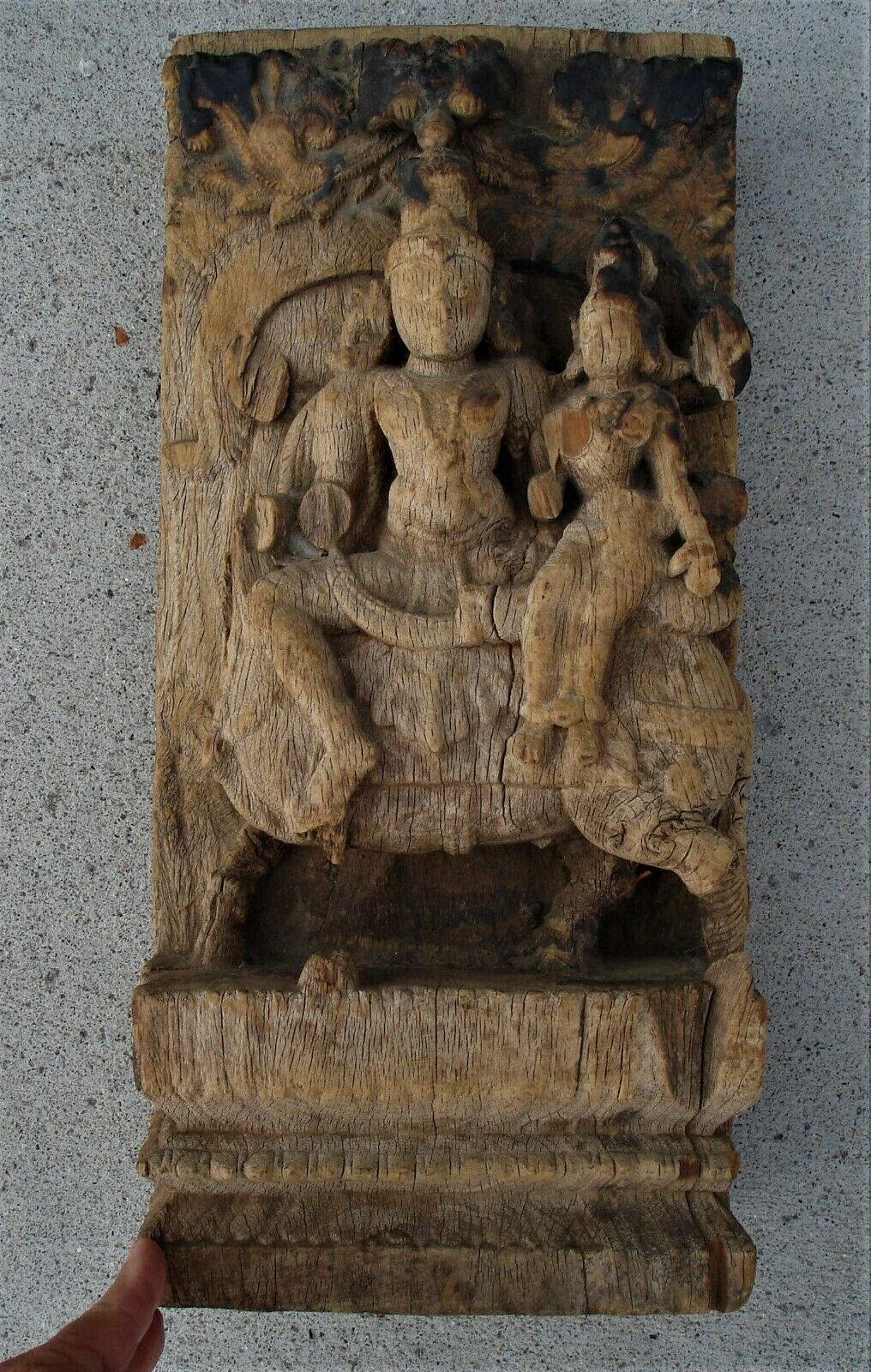-40%
THE DEITY INDRA SITS WITH HIS CONSORT, INDRANI, ON THE BACK OF THEIR ELEPHANT
$ 52.26
- Description
- Size Guide
Description
THEDEITY
INDRA
SITS WITH HIS CONSORT,
INDRANI,
ON THE BACK OF THEIR ELEPHANT,
AIRAVATA
Central- Southern India
Height:
18 ½”
Width:
8 ½”
Depth:
4 ½”
Weight:
14 lbs
15.1 oz
This marvelous wooden sculpture comes from a private house-temple in the
Kongu Nadu region of Tamil Nadu in south/central India.
It was part of a once elaborate estate.
Judging by its size/form it was part of a series of wall hangings that venerated
Indra.
Indra
is an ancient Vedic deity in Hinduism.
His mythology and powers are similar to other Indo-European deities, like Jupiter, Zeus and Thor suggesting a tantalizing common origin in Proto-Indo-European mythology. He is the god of the heavens, lightning, thunder, storms, rains, river flows and war.
According to the original collector, this nicely preserved artifact, based on the wood quality/form probably dates to the late 17
th
early/ 18
th
century when it was apparently removed from the estate.
The sculpture is in relatively good shape, though the head/trunk of the “white” elephant,
Airavata
is missing, along with left front/rear legs.
Minor chinks/dings appear throughout the carving:
right lower arm of
Indra
is missing as is right breast/lower right arm of
Indrani.
Noses of both deities worn down perhaps from venerated touching.
Dark patina along top edge of carving as well as sections of the crowns/sides suggests years of touching by visitors as well as top-down exposure to southern India’s intense sunlight. Minor humidity/dry environment hairline wood cracks.
The chinks/missing sections of this beautiful carving give the piece gravitas and the proper feeling of antiquity.
This is a solid artifact carving of an important, one of the oldest of Hindu deities.

















